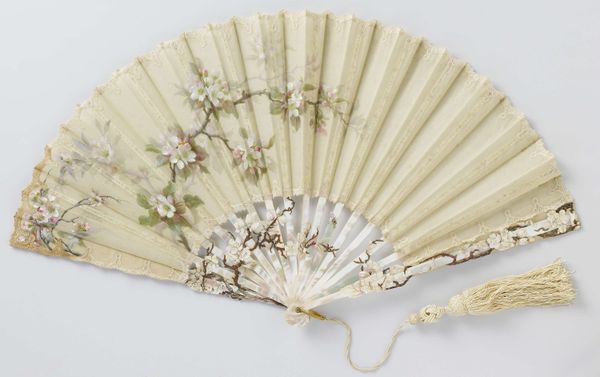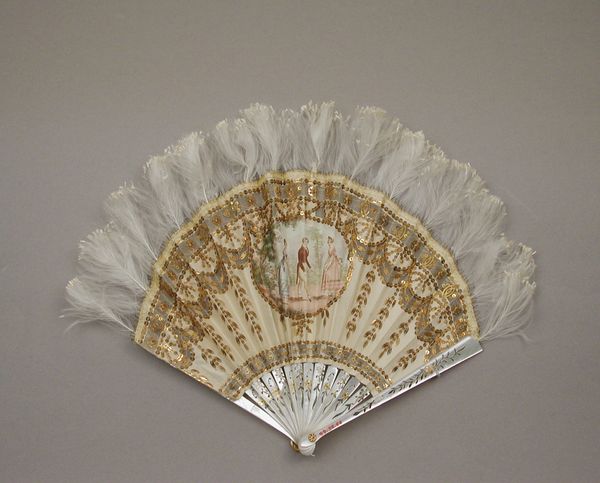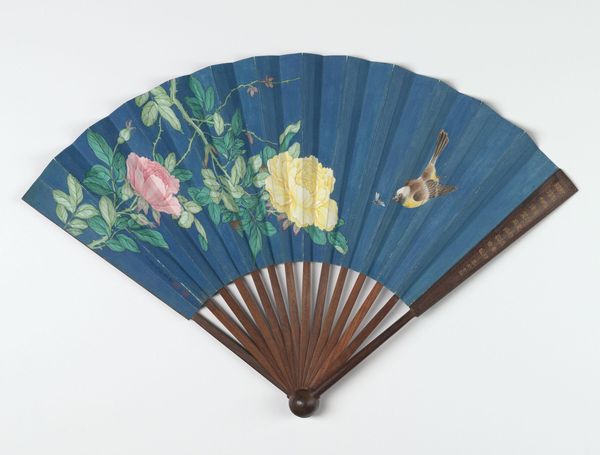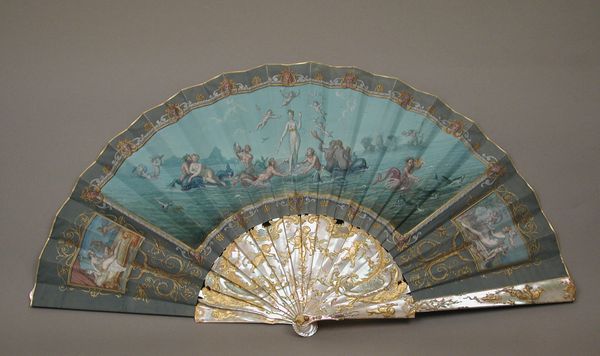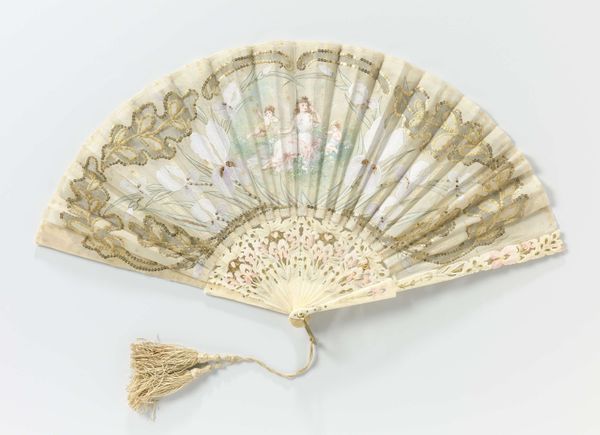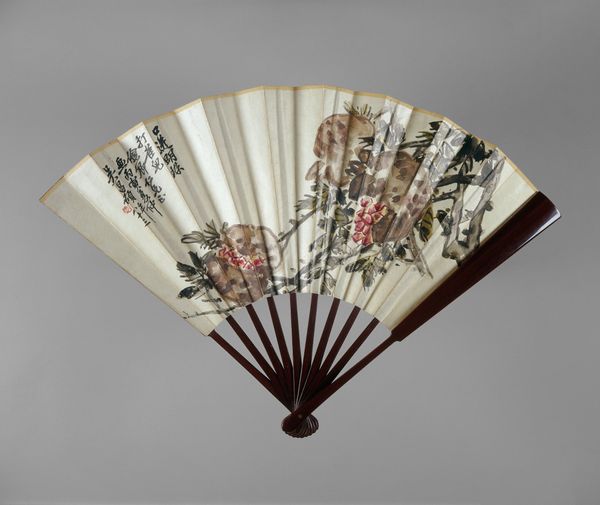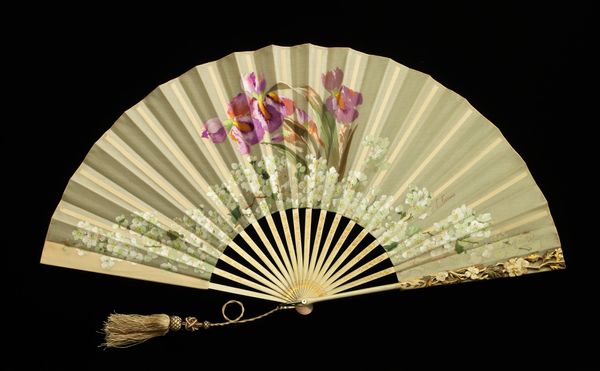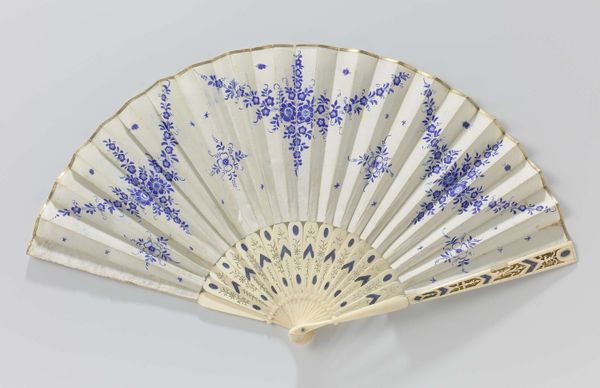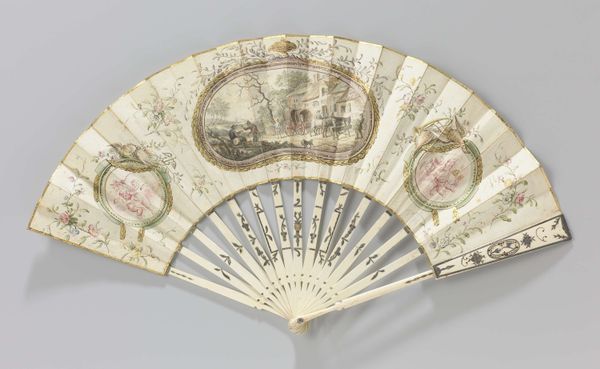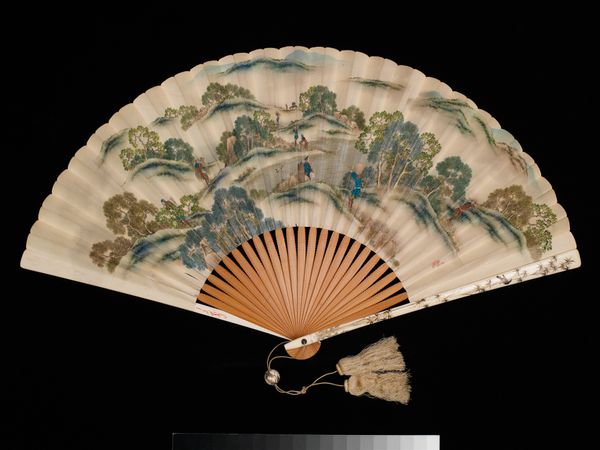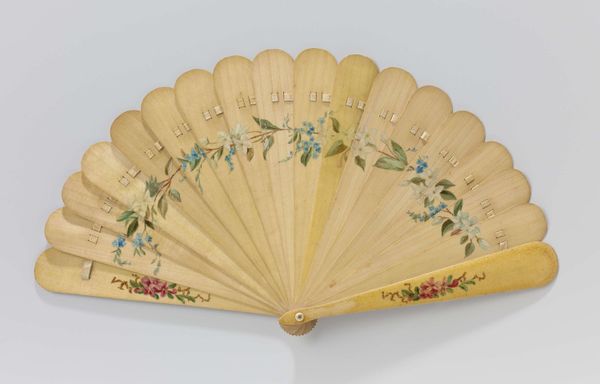
painting, textile, paper, sculpture
painting
textile
paper
sculpture
romanticism
textile design
decorative-art
clothing design
Dimensions: Overall (confirmed): 10 3/4 × 20 3/8 in. (27.3 × 51.8 cm)
Copyright: Public Domain
Curator: Well, it looks delicate. Almost too precious to be useful. Editor: Indeed. What we're looking at is a fan, likely dating back to the 19th century. It resides here at the Metropolitan Museum of Art. It combines multiple mediums—paper, paint and textile alongside a sculpture of some sort, showcasing delicate roses across its surface. Curator: Ah, roses—so Victorian. All that painstaking labor to make something purely ornamental, something to signal refinement. How were such items consumed, beyond the obvious practical use, that is if any? Was this a gift? How much labor from invisible hands went into making it? Editor: Good questions. Fans like this circulated amongst elite circles. The imagery, like the roses here, carried symbolic weight. Roses in the 19th century frequently conveyed affection, secrecy or beauty, all depending on the context. Curator: And the fan itself, the action of fanning? What was being hidden and what revealed? Was this performative modesty? These decorative objects were designed and placed within the societal performance of coquetry and wealth. It looks more like an art of clothing design. Editor: Absolutely, it’s integral to understand how museums like this one collect and display such objects. It speaks volumes about our interpretation and our emphasis on what we perceive to be artistic value and how the perception changed or solidified to get us here today. The provenance of these items often hints to a very controlled and specific story for how those elites should be seen by their social counterparts and descendants alike. Curator: Thinking about the process... What about the artisans, their skills? The unseen makers producing these luxury items while being socially invisible and unheard? We are left pondering over the final output that obfuscates the reality of those involved. Editor: Precisely. Its delicate composition masks the power dynamics embedded within the fan’s history, so to speak. Museums do a job both by including and excluding works, showing the historical powers who did all the talking while other labor forces went unpaid, uncredited. Curator: So a simple object actually reveals layers upon layers of complex relationships that can also change throughout different moments in time. Editor: It’s really a looking glass, of class, culture and labor reflected, wouldn't you say?
Comments
No comments
Be the first to comment and join the conversation on the ultimate creative platform.
